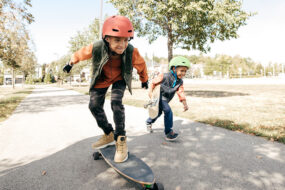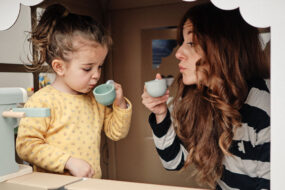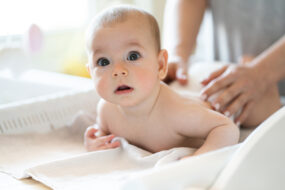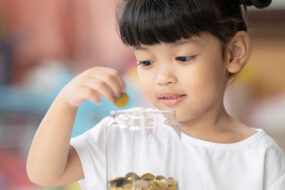How to treat nappy rash (and other skin rashes in kids) fast
Rashes are a common cause of discomfort in kids, so it’s important to know how to identify them. Here’s how to spot and treat nappy rash, slapped cheek, and more.
Whether your child is experiencing skin irritation from nappy rash or as a symptom of a virus, it can be highly distressing for them and for you.
The good news is there are remedies to soothe your child’s sore and inflamed or itchy skin.
Here is how to recognise and manage nappy rash and other common rash-causing illnesses in children.
Nappy rash explained
Nappy rash is one of the most common skin issues impacting babies, baby skincare specialist Catherine Cervasio says.
“More than half of babies are affected in their first 12 months of life,” Catherine, who is also an aromatherapist and infant massage instructor, says.
“Nappy rash is generally caused by a soiled nappy or nappy pant being in contact with a child’s skin.”
Moisture from wee and poo, combined with the friction from the nappy materials, causes damage to the skin.
While teething is sometimes blamed for nappy rash, child health nurse and Parenting Genie founder Babrah Tavaziva says it’s more likely that teething-induced diarrhoea may create a higher-risk environment for it to happen.
“Mainly, they get loose stools with teething; and also as they (children) get a bit older, parents often become a bit more relaxed about changing them as often compared to when they were newborns,” Babrah explains.
What does nappy rash look like?
Nappy rash is easy to identify and appears as red, irritated skin around your baby’s nappy area, and it can be mild, moderate or severe, Babrah explains.
“Parents pick up on the redness, the skin might feel warm, look sore, and the baby might be upset,” she says.
Best ways to treat nappy rash
Prevention using a barrier cream is the easiest way to manage nappy rash, Catherine says.
“Applying a nappy cream or balm provides a light barrier between the wetness and the skin,” she explains.
“This barrier works to prevent urine and stools from coming into prolonged direct contact with fragile, infant skin.”
If nappy rash does occur, Babrah says it can usually be treated by keeping the area clean and as dry as possible.
“Use fragrance-free wipes — steer away from anything with additives,” Babrah adds.
“Make sure the nappy is fitting properly, not too tight, and give your baby nappy-free time at least once a day — it works like magic.”
Babrah says a nappy rash cream containing zinc oxide is quite effective, while Catherine says her preferred natural treatments are products containing ingredients such as calendula, evening primrose, vitamin E and chamomile oils.
If the nappy rash doesn’t clear, Babrah recommends seeing a doctor who may prescribe a medicated nappy cream.
Other common rashes in kids
Chickenpox
Chickenpox is a highly contagious viral infection that presents as an itchy rash of red spots that progress to fluid-filled blisters.
While children are most likely to be affected, the chickenpox vaccine has reduced its prevalence and severity.
As well as the itchy rash, children may have a fever and be tired and irritable; however, chickenpox can usually be managed at home with rest and fluids.
Hand, foot and mouth disease
Hand, foot and mouth disease (HFMD) — another common virus that mainly affects children under the age of 10 — is identifiable by a rash or blisters on the palms, soles of the feet and in or around the mouth.
HFMD may cause a fever and while the rash isn’t itchy, it can be painful, Babrah says, noting the illness is best managed with home care.
“It’s very contagious, so they (kids) need to stay home, and then treatment is usually over-the-counter medication for the fever and pain such as paracetamol or ibuprofen,” she says.
“It’s also important to keep the child hydrated, so lots of fluids and ice pops can help as well, especially to help relieve the sores in their mouth.”
Slapped cheek syndrome
Also known as fifth disease, slapped cheek often appears as a rash on the cheeks that looks like they may have been slapped.
“The rash may spread to the body, arms and legs too,” Babrah says.
Slapped cheek is a very common virus, mostly impacting children aged between four and 10, and while it can cause a fever, it is usually quite mild.
Babrah says children are contagious while they have the fever but not once it has resolved, even if the rash is still present.
“Again, treatment is home care — paracetamol or ibuprofen for managing pain and fever, hydration and rest,” she says.
More on children’s health:
- 7 kids’ health questions you might be too embarrassed to ask
- Everything you need to know about grommets for kids
- What are threadworms and how do you get rid of them?
- Is your child at risk for RSV? What you need to know
Written by Claire Burke.




